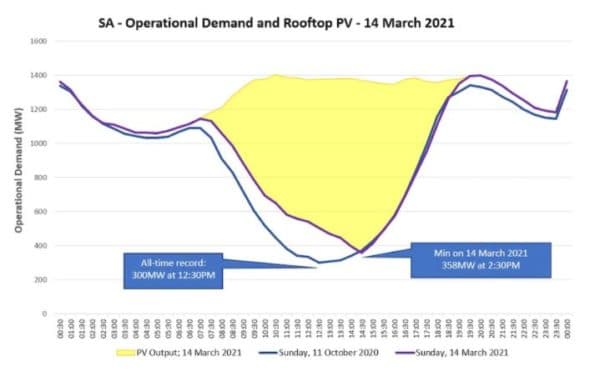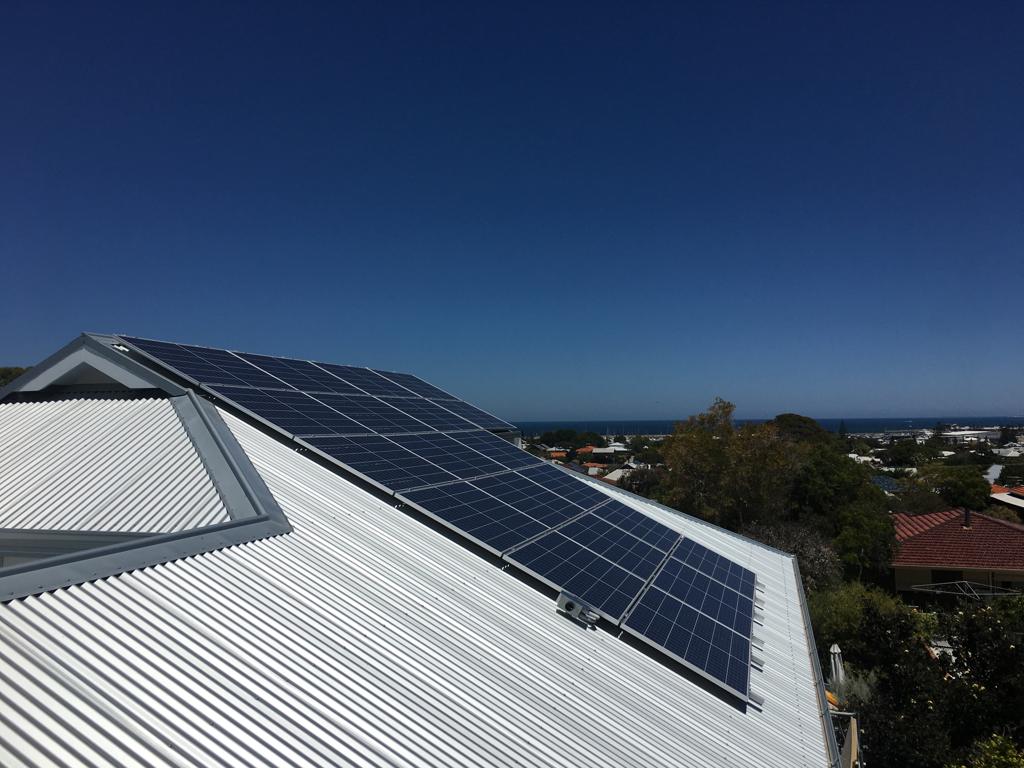AEMO said transmission authorities in South Australia had remotely switched off more than 10,000 rooftop solar systems and almost 30 MW of large-scale solar PV on Sunday afternoon with the state experiencing “near-record minimum demand levels for electricity from the grid” due in part to mild weather conditions, low energy needs from industry and large volumes of surplus electricity from rooftop solar passively feeding into the power system
Australia’s rapid uptake of rooftop and large-scale solar has delivered periods of very low demand, prompting the South Australian Government to last year introduce an initiative which provides transmission authorities with permission to restrict solar PV output as a way of mitigating the threat to the security of the National Electricity Market (NEM). Sunday was the first time the restrictions had been enacted.
With the Heywood interconnector, which links the state’s grid with Victoria, undergoing maintenance and scheduled demand forecast to dip to 400 MW, AEMO instructed transmission company ElectraNet to “maintain grid demand above 400 MW” for one hour during the afternoon.
“On Sunday, South Australia experienced near-record minimum demand levels for electricity from the grid,” an AEMO spokesperson said, confirming minimum operational demand had fallen to 358 MW, just shy of the 300 MW record set on October 11, 2020.
“At the same time, a planned outage of the circuits feeding the Heywood interconnector was taking place.
“To preserve system security in South Australia, AEMO maintained the minimum amount of synchronous generation to maintain system security.
“AEMO also needed to then direct ElectraNet to maintain grid demand above 400 MW from 3pm local time for one hour.”

Image: AEMO
This resulted in ElectraNet curtailing a range of larger distribution-connected and residential solar customers, including those through the South Australian Government’s ‘Smarter Homes’ initiatives which mandates all new small business and residential solar PV installations must assign an agent to curtail generation in rare events threatening the security of the NEM.
About 10 MW of distributed solar PV was removed that way for the first time by electricity distributor South Australia Power Networks (SAPN) through registered agents.
Another 40 MW of rooftop solar PV was curtailed through SAPN’s enhanced voltage management system at seven substations and an estimated 17 MW of commercial solar PV was cut off through Supervisory Control and Data Acquisition (SCADA) control systems.
AEMO said the ability to manage large-scale and residential solar customers is vital to support the ongoing transition to a renewable power system and warned system security concerns due to minimum operational demand are likely to become more common..
“Minimum demand events will become increasingly common throughout Australia as we continue to integrate rooftop PV installations,” the spokesperson said.
AEMO said it has been and continues to work with governments, government agencies, market bodies and consumers to support the development of a range of measures that seeks to enable greater amounts of renewable energy in the NEM and maximise consumer benefits.
This includes establishing Australia’s first distributed energy resources (DER) register, conducting engineering studies, trials and modelling to effectively integrate DER, and enhance inverter standards, market reforms and regulations.
In addition, AEMO said it is contributing to the Energy Security Board’s (ESB) post 2025 energy reforms, aimed at progressing a modern regulatory structure which will better support innovative market response to these situations.
This content is protected by copyright and may not be reused. If you want to cooperate with us and would like to reuse some of our content, please contact: editors@pv-magazine.com.









9 comments
By submitting this form you agree to pv magazine using your data for the purposes of publishing your comment.
Your personal data will only be disclosed or otherwise transmitted to third parties for the purposes of spam filtering or if this is necessary for technical maintenance of the website. Any other transfer to third parties will not take place unless this is justified on the basis of applicable data protection regulations or if pv magazine is legally obliged to do so.
You may revoke this consent at any time with effect for the future, in which case your personal data will be deleted immediately. Otherwise, your data will be deleted if pv magazine has processed your request or the purpose of data storage is fulfilled.
Further information on data privacy can be found in our Data Protection Policy.